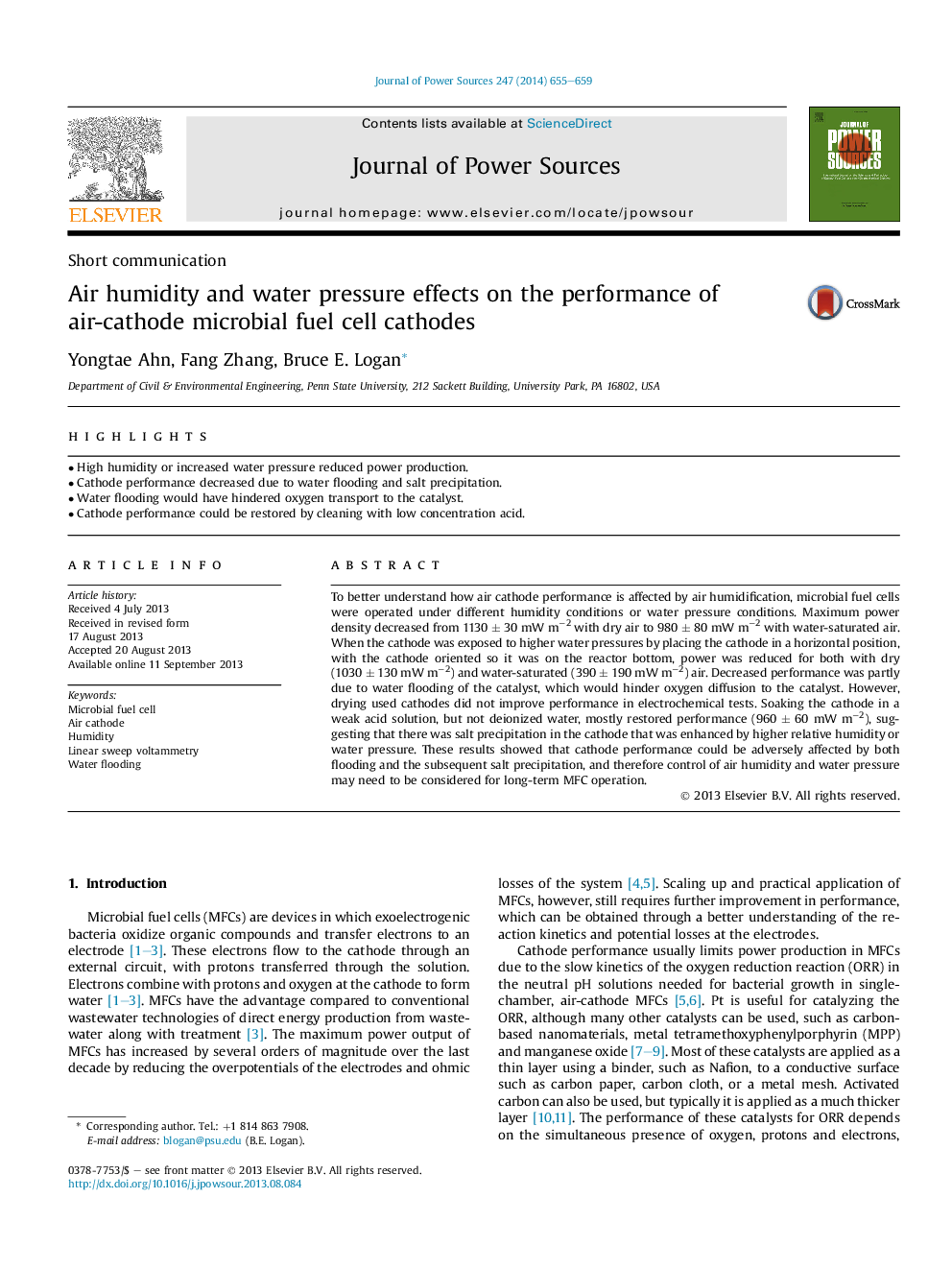| Article ID | Journal | Published Year | Pages | File Type |
|---|---|---|---|---|
| 7738506 | Journal of Power Sources | 2014 | 5 Pages |
Abstract
To better understand how air cathode performance is affected by air humidification, microbial fuel cells were operated under different humidity conditions or water pressure conditions. Maximum power density decreased from 1130 ± 30 mW mâ2 with dry air to 980 ± 80 mW mâ2 with water-saturated air. When the cathode was exposed to higher water pressures by placing the cathode in a horizontal position, with the cathode oriented so it was on the reactor bottom, power was reduced for both with dry (1030 ± 130 mW mâ2) and water-saturated (390 ± 190 mW mâ2) air. Decreased performance was partly due to water flooding of the catalyst, which would hinder oxygen diffusion to the catalyst. However, drying used cathodes did not improve performance in electrochemical tests. Soaking the cathode in a weak acid solution, but not deionized water, mostly restored performance (960 ± 60 mW mâ2), suggesting that there was salt precipitation in the cathode that was enhanced by higher relative humidity or water pressure. These results showed that cathode performance could be adversely affected by both flooding and the subsequent salt precipitation, and therefore control of air humidity and water pressure may need to be considered for long-term MFC operation.
Related Topics
Physical Sciences and Engineering
Chemistry
Electrochemistry
Authors
Yongtae Ahn, Fang Zhang, Bruce E. Logan,
